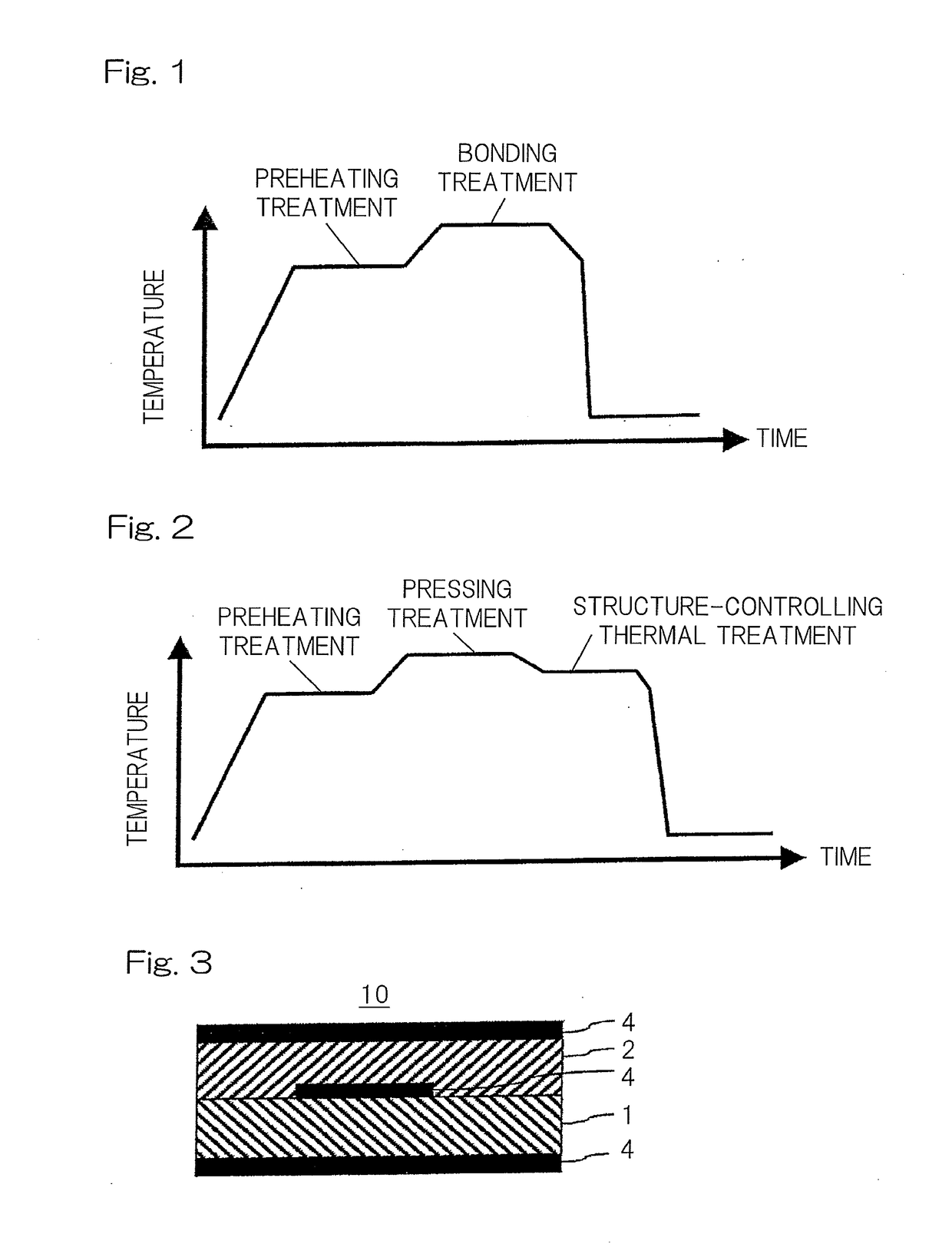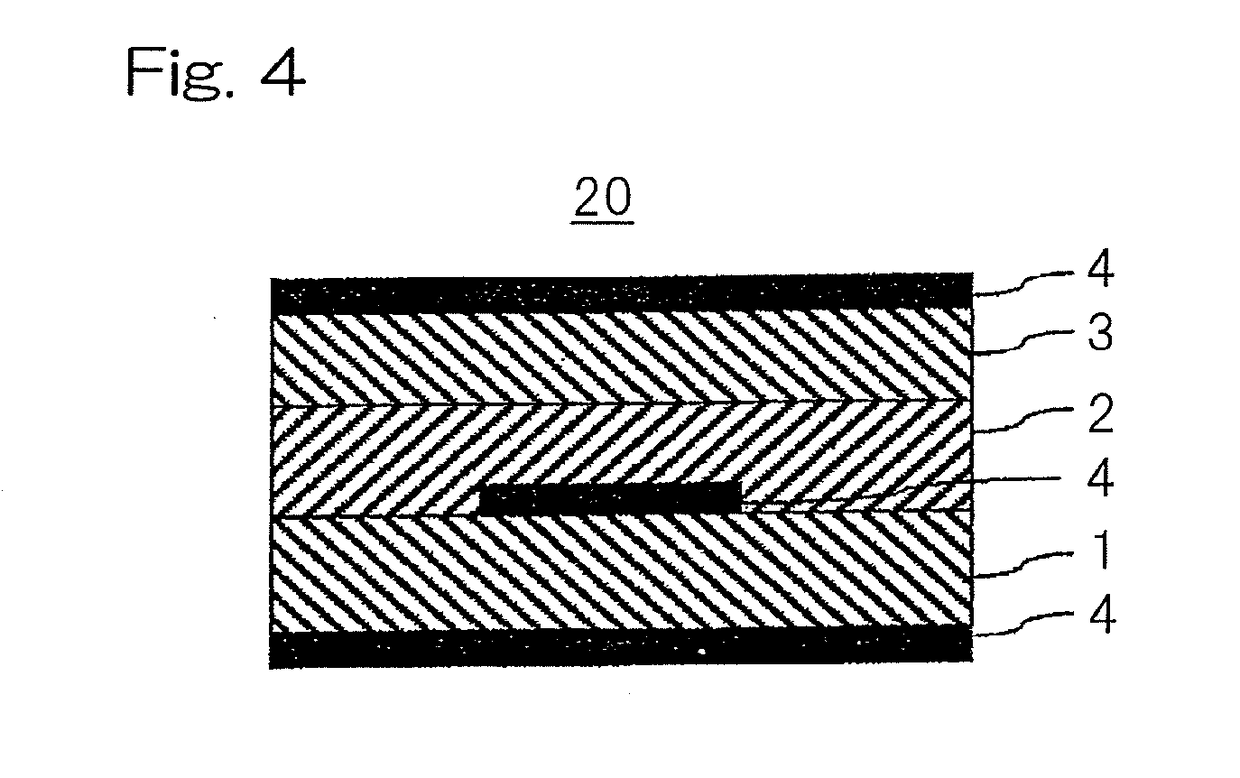Circuit board and method for manufacturing same
a technology of circuit board and manufacturing method, which is applied in the direction of dielectric characteristics, conductive pattern formation, thermoplastic polymer dielectrics, etc., can solve the problems of design restrictions on lamination structure, inconvenient mass production of laminated circuit board method, etc., and achieve excellent solder heat resistance and peeling resistance, excellent dimensional stability, and excellent heat resistan
- Summary
- Abstract
- Description
- Claims
- Application Information
AI Technical Summary
Benefits of technology
Problems solved by technology
Method used
Image
Examples
example 1
[0110]Onto each surface of a TLCP film having a melting point of 335° C. (Kuraray Co., Ltd., CT-Z, thickness: 50 μm), a rolled copper foil (JX Nippon Mining & Metals Corporation, BHYX-T-12, thickness: 12 μm) was set to be laminated, and using a vacuum hot press apparatus (heating board temperature: 300° C.), thermo-compression-bonding was carried out for 10 minutes under a pressure of 4 MPa to produce a first unit circuit board having a configuration of copper foil / TLCP film / copper foil.
[0111]Onto one surface of a TLCP film having a melting point of 285° C. (Kuraray Co., Ltd., CT-F, thickness: 50 μm), a rolled copper foil (JX Nippon Mining & Metals Corporation, BHYX-T-12, thickness: 12 μm) was set to be laminated, and using a vacuum hot press apparatus (heating board temperature: 275° C.), thermo-compression-bonding was carried out for 10 minutes under a pressure of 4 MPa to produce a second unit circuit board having a configuration of copper foil / TLCP film. Subsequently, circuit pr...
example 2
[0114]Except for changing the adhesion temperature for thermo-compression-bonding of a stacked material into 295° C., a circuit board of Example 2 was obtained using the same material and producing conditions as Example 1. In order to examine dimensional change rate, the second unit circuit board before lamination was subjected to marking by selecting a field (25 cm×25 cm) and pointing 25 marks (punched holes) in total with five rows in the MD direction and five rows in the TD direction. The interval of the opposed rows was 5 cm, and the punched holes in each row countered in the MD direction and the TD direction.
example 3
[0115]Except for changing the adhesion temperature for thermo-compression-bonding of a stacked material into 300° C., a circuit board of Example 3 was obtained using the same material and producing conditions as Example 1.
PUM
| Property | Measurement | Unit |
|---|---|---|
| temperature | aaaaa | aaaaa |
| temperature | aaaaa | aaaaa |
| temperature | aaaaa | aaaaa |
Abstract
Description
Claims
Application Information
 Login to View More
Login to View More - R&D
- Intellectual Property
- Life Sciences
- Materials
- Tech Scout
- Unparalleled Data Quality
- Higher Quality Content
- 60% Fewer Hallucinations
Browse by: Latest US Patents, China's latest patents, Technical Efficacy Thesaurus, Application Domain, Technology Topic, Popular Technical Reports.
© 2025 PatSnap. All rights reserved.Legal|Privacy policy|Modern Slavery Act Transparency Statement|Sitemap|About US| Contact US: help@patsnap.com



